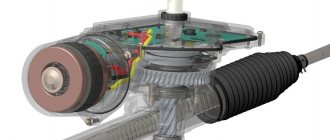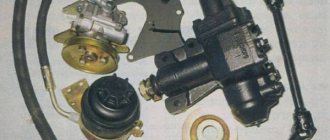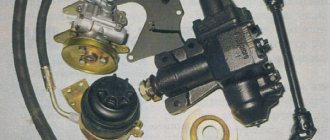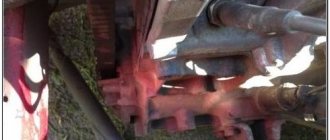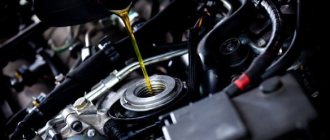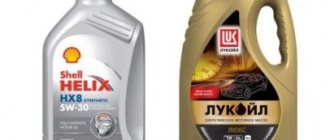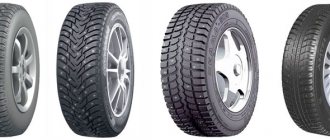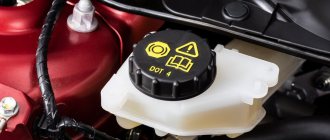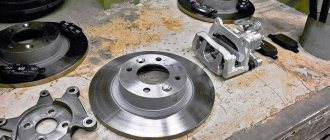Power steering (power steering) is found in almost any modern car. The power steering function is to facilitate steering turns by pumping oil at high pressure. Heavy-duty vehicles are especially dependent on power steering; without it, turning the huge wheels would be impossible.
Next we will talk about changing the oil in the power steering on a Lada Priora yourself. Experienced car owners know that this should be done at least once every 4-5 years (every 80 thousand kilometers). We have already considered replacing the VAZ 2115 power steering oil. There are no particular differences from a similar procedure on the Lada Priora.
Algorithm for replacing power steering fluid Lada Priora
- Raise the front end with jacks (this will make it easier to drain the old oil)
- Use a syringe with a hose of the required diameter (you can use a washer hose) to pump out the oil from the tank.
Operating procedure
Before starting work, you need to prepare a container where the oil will drain. Castrol is no exception.
- Jack up the front wheels. Two tools should be enough for this. The procedure will be especially useful when you have to drain the old composition.
- A bulb or syringe will help rid the structure of old liquid. The oil tank becomes one of the most important parts.
- It is necessary to cover the belts with something. This will protect them from the oil, otherwise it will be difficult to get rid of the marks later.
- You need to call an assistant so that he can twist the steering wheel as much as possible, either to the right or to the left. Oil will appear in the tank again, which must be pumped out immediately.
- The return hose is turned off. It doesn't matter if you use Hadot oil, Eneos oil or something else.
- The hose is lowered into the bottle, after which the old excess liquid is drained again.
- You can connect the hose back when everything is completely drained.
- A new composition is poured in until the Lada Priora part is completely filled. The frequency of replacement has already been described previously.
- Again you need to ask someone to turn the steering wheel. Oil is added to the system as it drains.
- The specification says that you need to start the engine for 10-15 seconds after the work has been completed. The liquid will begin to decrease again. And again topping up is required.
- It remains to make sure that when turning the steering wheel no air bubbles appear in the tank. Power steering always requires such checks.
- If necessary, add oil to the appropriate level.
Replacing power steering fluid in Lada Priora - step-by-step instructions
1. First of all, you need to jack up the front end, this will simplify the task when you need to expel old oil from the system. To do this, use two jacks.
2. To pump out the oil from the tank, take a syringe and put a hose of a suitable diameter on it (suitable from a washer or medical “system”).
3. Then cover the belts with something (cellophane, a rag) so that oil does not get on them, rubber does not like this.
4. Start pumping the oil into the prepared container.
5. When the oil is pumped out, ask an assistant to turn the steering wheel as far as possible to the left/right. With these movements, oil will appear in the tank again, your task is to immediately pump it out.
6. After this, disconnect the “return” hose and lower its end into some bottle, and turn the steering wheel again, the system will again expel the old oil.
7. After the oil has been completely drained, reconnect the hose.
8. Fill the power steering system with new oil, up to the top.
- When the oil is poured, ask a friend to turn the steering wheel, while you continue to add oil as it decreases into the system.
- After the oil has stopped decreasing, start the engine for 10-15 seconds. During operation, the oil will also decrease - add again.
- Turn off the engine, turn the steering wheel again 5-7 times in each direction until it stops, make sure that there are no air bubbles in the tank.
- Add oil to the level if necessary.
- Check the operation by starting the engine and trying to turn the steering wheel. There should be no noise or difficulty during rotation, the steering wheel should be soft and rotate without problems.
How to remove and change power steering on a Priora (VAZ 2170) 1.6 2008
LADA Priora car contacted a service station was extraneous noise when the steering wheel moved. During diagnostics, a humming sound from the power steering pump was detected. Apparently its work has come to an end, or the power steering has been changed very rarely (the recommended frequency is 50-60 thousand kilometers ). You can try to simply change the fluid to the original one or try to temporarily restore the pump, but it is better to immediately replace the power steering on the Priora and not waste time. In addition, it is cheaper than buying fluid and a repair kit twice.
Which power steering pump can be installed on Priora (VAZ 2170)?
Manufacturer Article number Price, rub.
| Original | ||
| VAZ | 21103407010 | 4500 |
| LADA | 21100340700900 | 6000 |
| Analogs | ||
| MSG | VZ 001 | 3900 |
For installation, we chose a spare part from an analog manufacturer MSG with article number VZ 001.
What kind of oil should I put in the Priora power steering?
From the factory, the Priora hydraulic booster is filled with light green oil Pentosin CHF 11S , the cost of which is more than 1,000 rubles per liter. Original article 00001-7504780-00-0 (price 1200 RUR). The manufacturer recommends using only original fluid for power steering , so the manual makes a note that using a fluid other than Pentosin Hydraulik Fluid CHF 11S-TL VW52137 may lead to malfunctions of the power steering pump!
We chose the synthetic gear oil “DEXRON III AUTOMATIC PLUS” from Mannol. Article number 1 liter bottle of power steering fluid - AP10107. The average market value is 390 rubles. It can also be liquid FEBI 6161 (price 500 rubles)
How much oil is in power steering Lada Priora
For a Priora with power steering, the expansion tank will require ~0.7 liters of fluid. When the system is completely pumped and flushed, the entire liter bottle can be used.
List of required tools
- Lift;
- 13 mm hex head ;
- The ratchet is large;
- Open-end wrench for 17, 22 and 27 mm ;
- Crosshead screwdriver;
- Sprocket T25 .
Stories from our readers
“Fucking basin. "
Hi all! My name is Mikhail, now I’ll tell you a story about how I managed to exchange my two-wheeler for a 2010 Camry. It all started with the fact that I began to be wildly irritated by the breakdowns of the two-wheeler, it seemed like nothing serious was broken, but damn it, there were so many little things that really started to irritate me. This is where the idea arose that it was time to change the car to a foreign car. The choice fell on the melting Camry of the tenth years.
Yes, I had matured morally, but financially I just couldn’t handle it. I’ll say right away that I am against loans and taking a car, especially not a new one, on credit is unreasonable. My salary is 24k a month, so collecting 600-700 thousand is almost impossible for me. I started looking for different ways to make money on the Internet. You can’t imagine how many scams there are, what I haven’t tried: sports betting, network marketing, and even the volcano casino, where I successfully lost about 10 thousand ((The only direction in which it seemed to me that I could make money was currency trading on the stock exchange, they call it Forex. But when I started delving into it, I realized that it was very difficult for me. I continued to dig further and came across binary options. The essence is the same as in Forex, but it’s much easier to understand. I started reading forums, studying trading strategies. I tried it on a demo account, then opened a real account. To be honest, I didn’t manage to start earning money right away, until I understood all the mechanics of options, I lost about 3,000 rubles, but as it turned out, it was a precious experience. Now I earn 5-7 thousand rubles a day. I managed to get the car buy after half a year, but in my opinion this is a good result, and it’s not about the car, my life has changed, I naturally quit my job, I have more free time for myself and my family. You’ll laugh, but I work directly on the phone)) If If you want to change your life like me, then here’s what I advise you to do right now: 1. Register on the site 2. Practice on a Demo account (it’s free). 3. As soon as you get something on the Demo account, top up your REAL ACCOUNT and go to REAL MONEY! I also advise you to download the application to your phone, it’s much more convenient to work from your phone. Download here.
Interchangeability and classification of oils
Typically, oils are divided into several types depending on color. How often to change the oil has already been described. The classification by color is not entirely correct. And don’t think that you can mix different brands of oils, even if they have exactly the same color. The composition and viscosity can always be different.
Power steering oils vary and have different features depending on the color.
There are some features associated with the color of the oil that are worth considering in more detail.
- Green color. This family is mainly used in VAG, Citroen, and Peugeot cars. The main thing is to never mix mineral water with synthetics if they have this color. Automatic transmission oil is never suitable.
- Mercedes cars use a yellow grade of oil.
- Dexrons are red. Only for automatic transmissions.
Synthetic oil can be added to power steering, but not in every case. To get the desired result, you need to understand whether the rubber parts have a special composition. But there are quite a few such options available.
Using this device you can see the color of the power steering oil.
What kind of fluid is poured into the power steering? Types of oils, differences and examples of use
The appearance of hydraulic power steering in the car design increased maneuverability and controllability. This is reflected in safety on the road - when there is no need to concentrate on applying significant forces to the steering wheel, it is easier for the driver to concentrate on the road situation.
Power steering is a complex technical system that requires periodic maintenance and repair.
When carrying out such activities, it is often necessary to replace or top up the fluid. Difficulties await motorists here - original materials from official dealers are expensive and are not always available for sale, and it is not easy to make the right choice from the various offers of auto chemical manufacturers that fill store shelves and pages of Internet resources.
Power steering fluids
Despite the prefix “hydro,” power steering does not use water, but various types of oils. They solve several problems:
Functionally, power steering fluids are close to those used in automatic transmissions. Perhaps the only difference is the ability of automatic transmission lubricants to create increased values of static friction for the clutches.
In fact, even the additive packages in these oils look similar and contain:
ATF (Automatic Transmission Fluid) contains additional additives that counteract slippage and wear of the gearbox clutches. Due to the need to use strictly defined substances in the oil composition for clutches made of different materials, a huge range of lubricants for automatic transmissions has appeared.
It should be noted that such a slight difference in the compositions of PSF (for hydraulic boosters) and ATF (for automatic transmissions) suggests the possibility of using the latter for filling in power steering. Additional additives, due to the absence of friction clutches, do not have a significant effect on the operation of the mechanism. This situation is taken into account, for example, by Japanese automakers, who use the same oils in steering as in automatic transmissions.
European automakers have a different approach. They insist on using specialized fluids in hydraulic boosters, and original ones, uniquely defined for each car model. This cannot be called anything other than an attempt to bind the buyer to you - all the mechanisms of the system function perfectly when filling in any that meet the technical characteristics.
